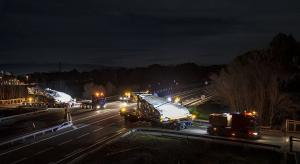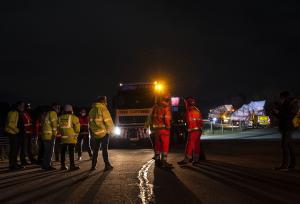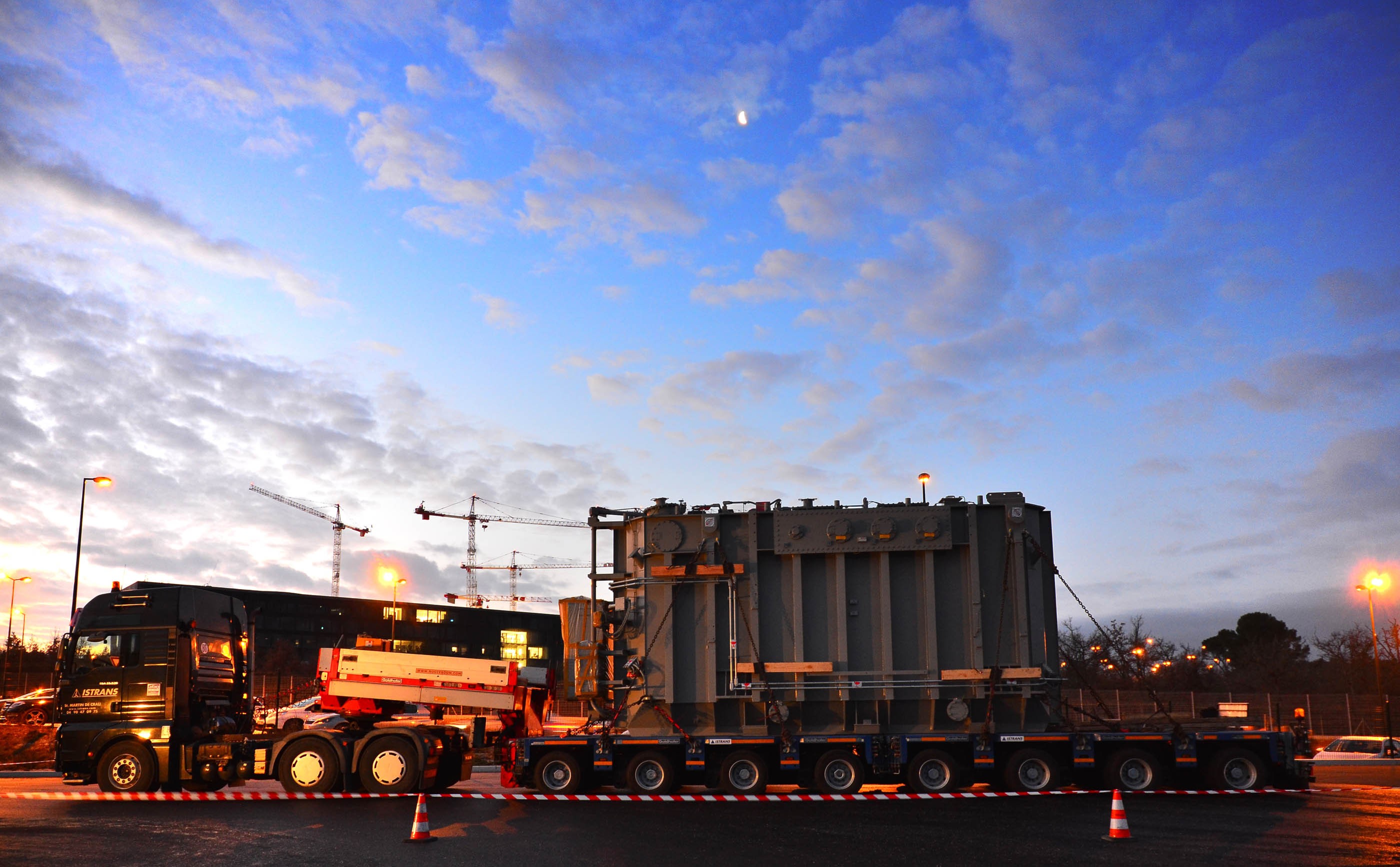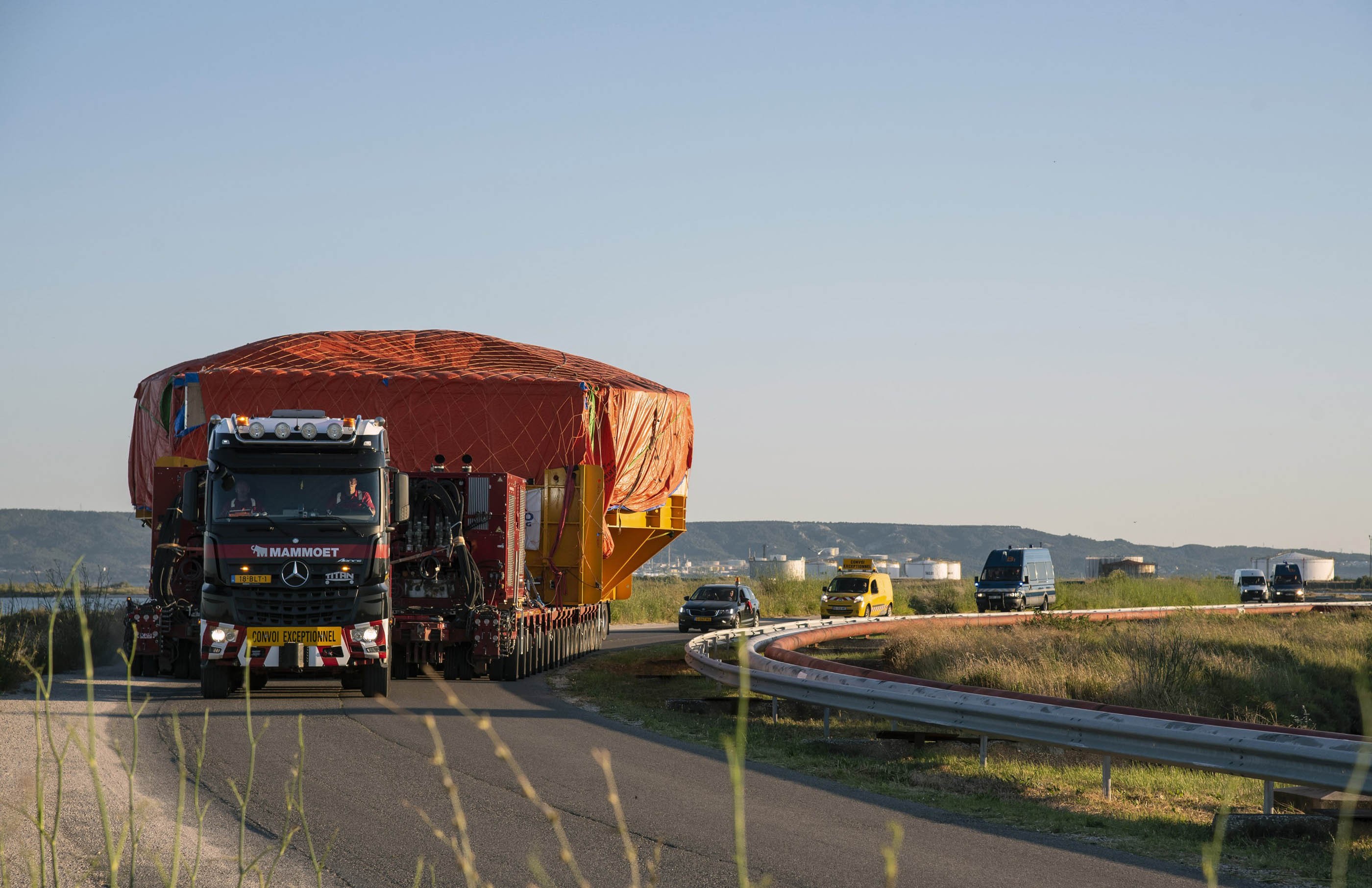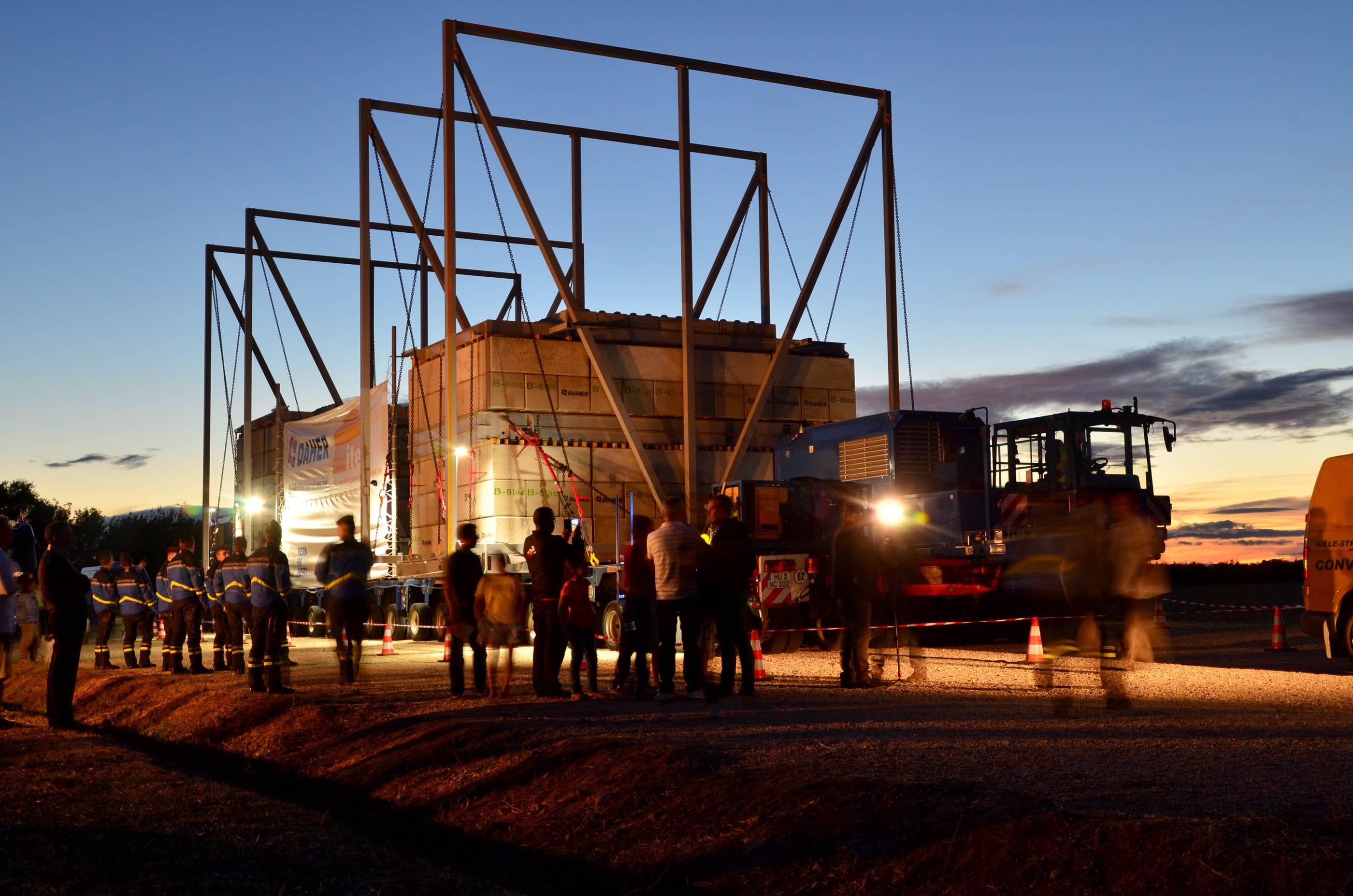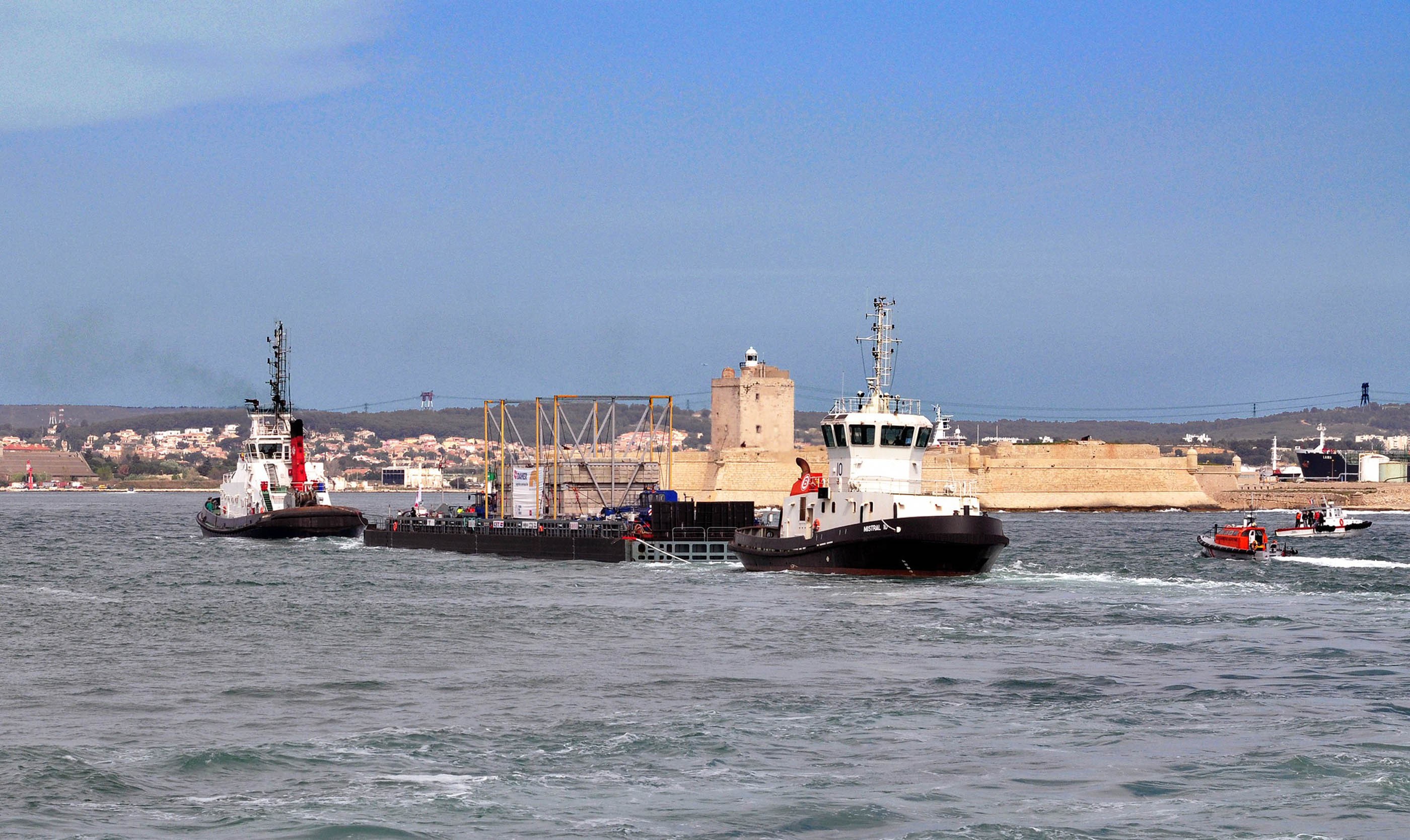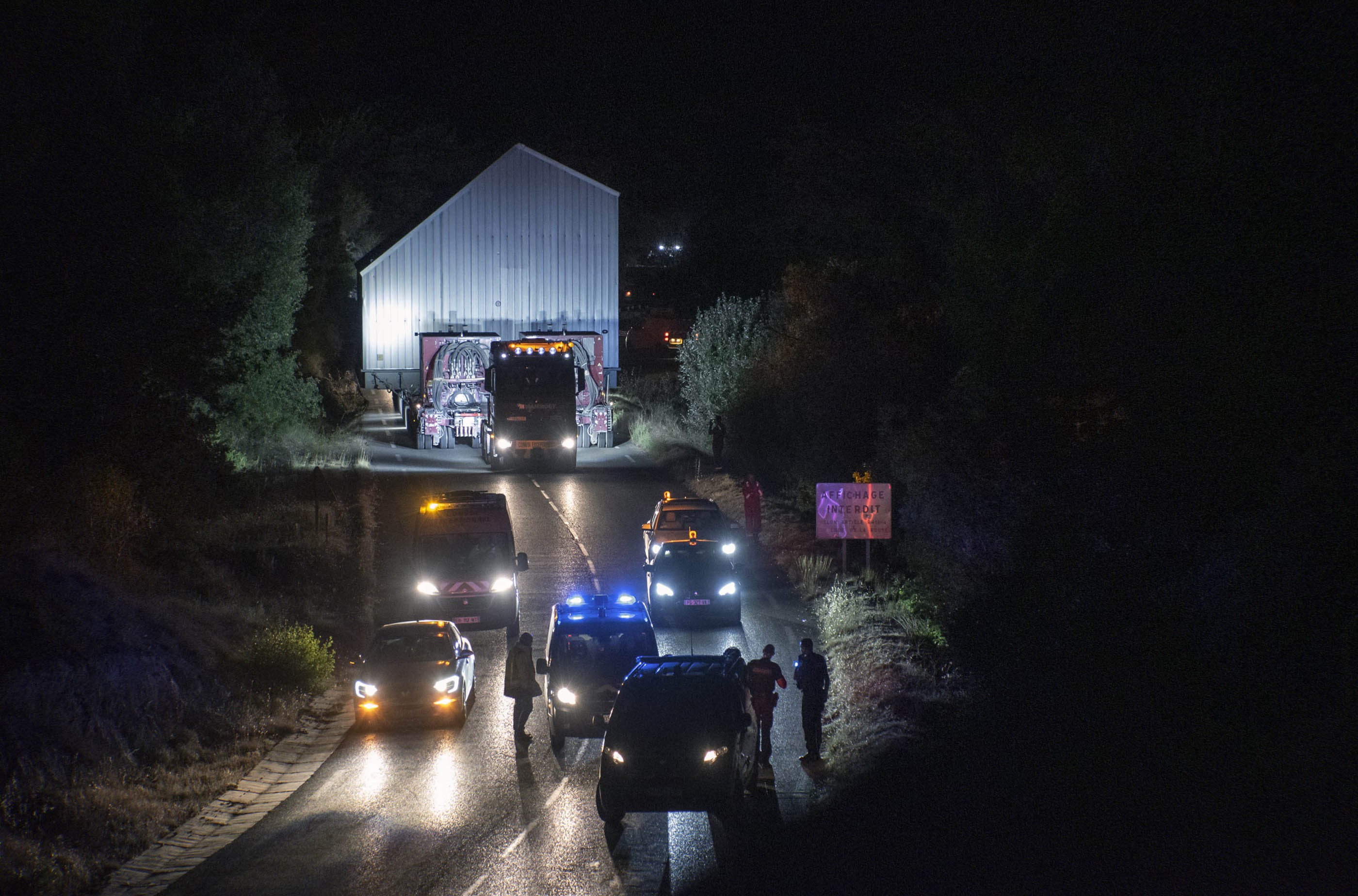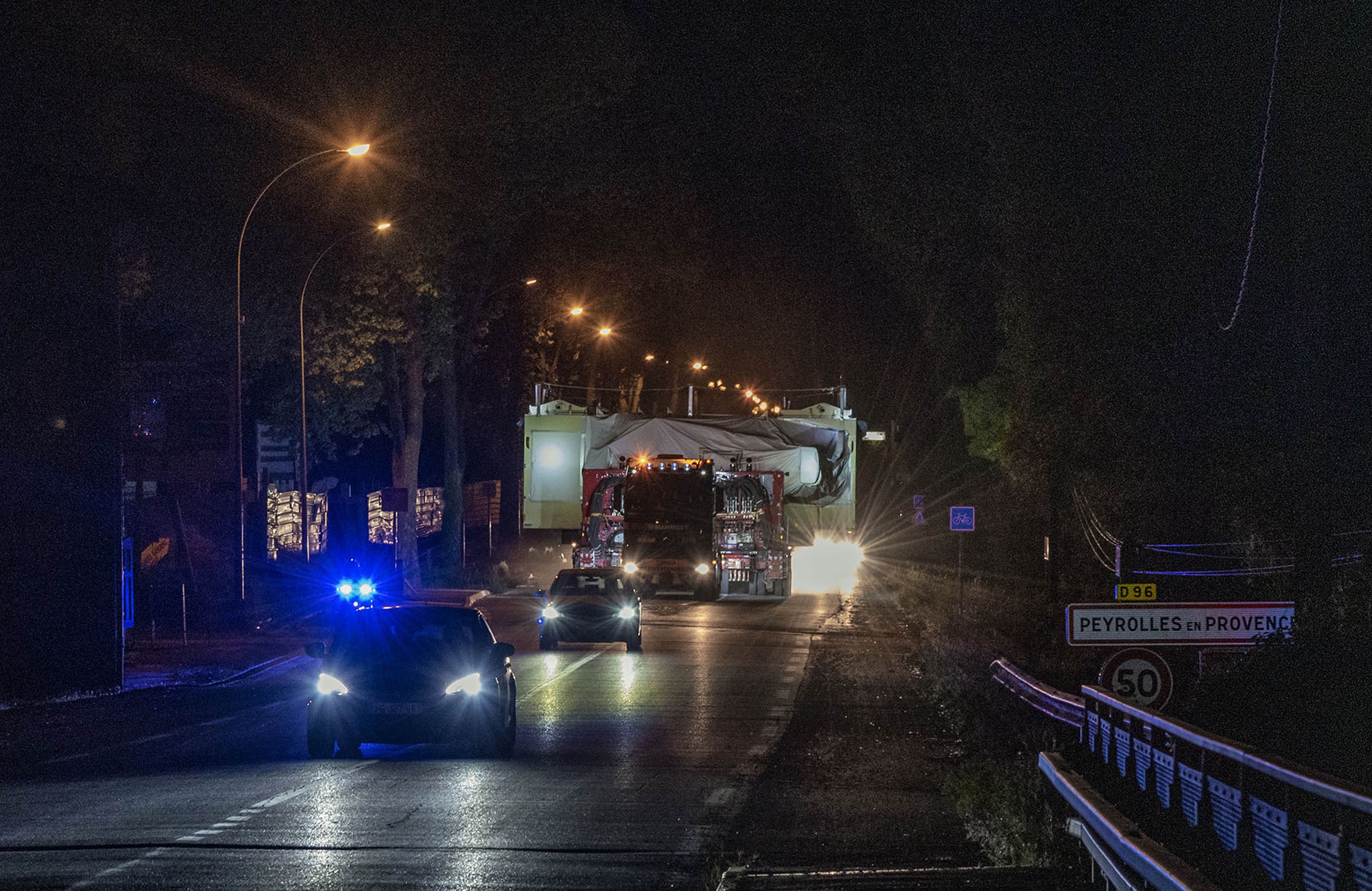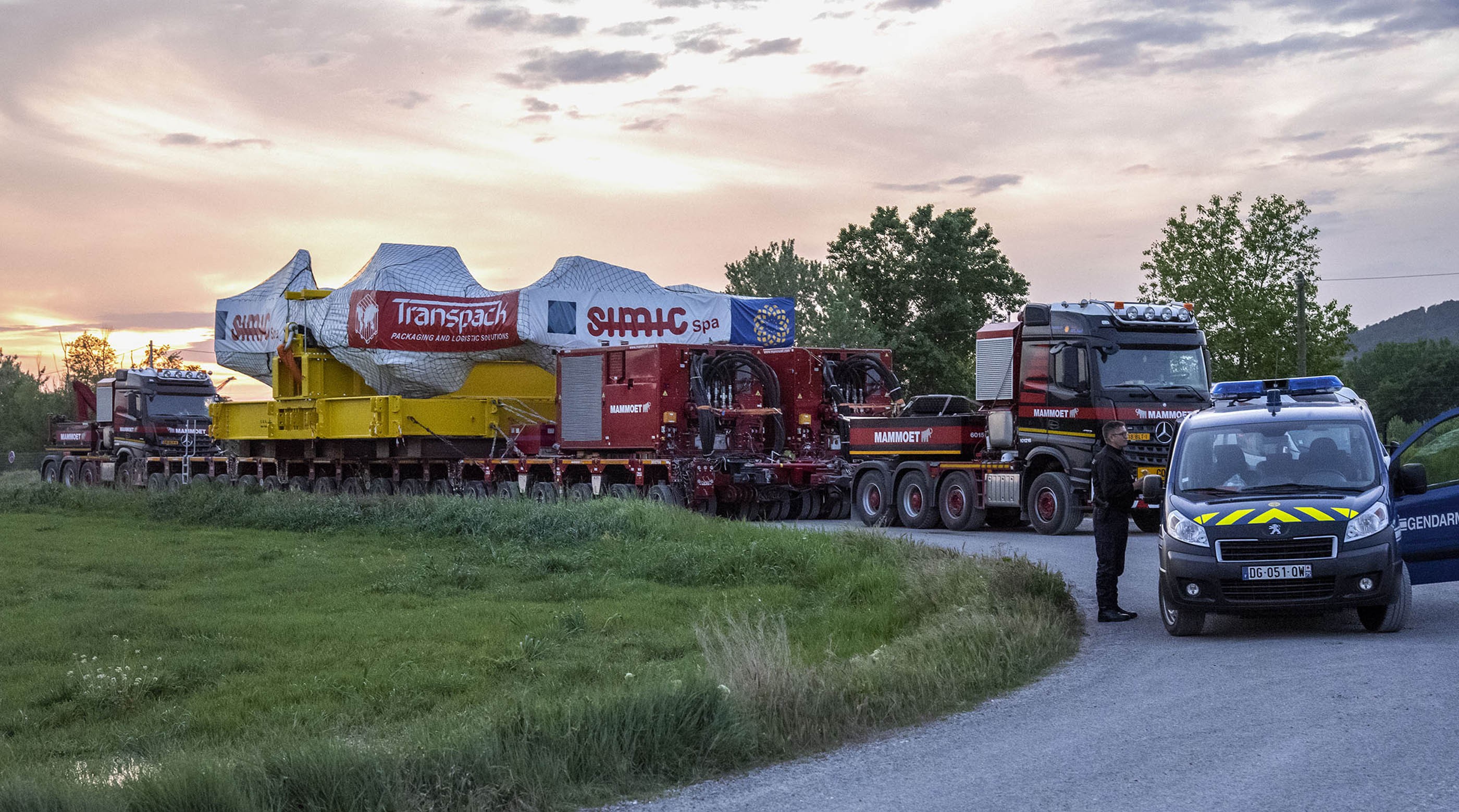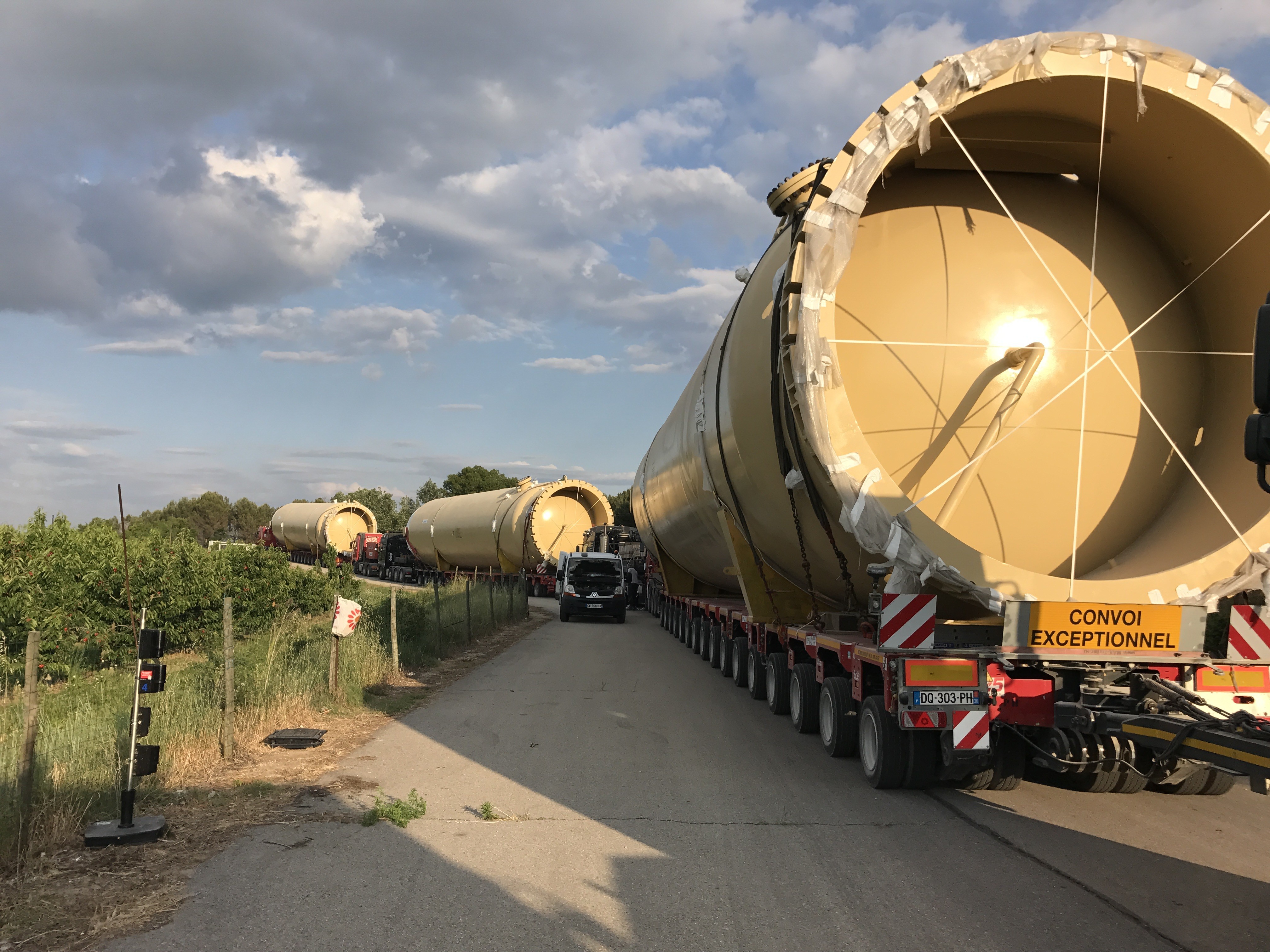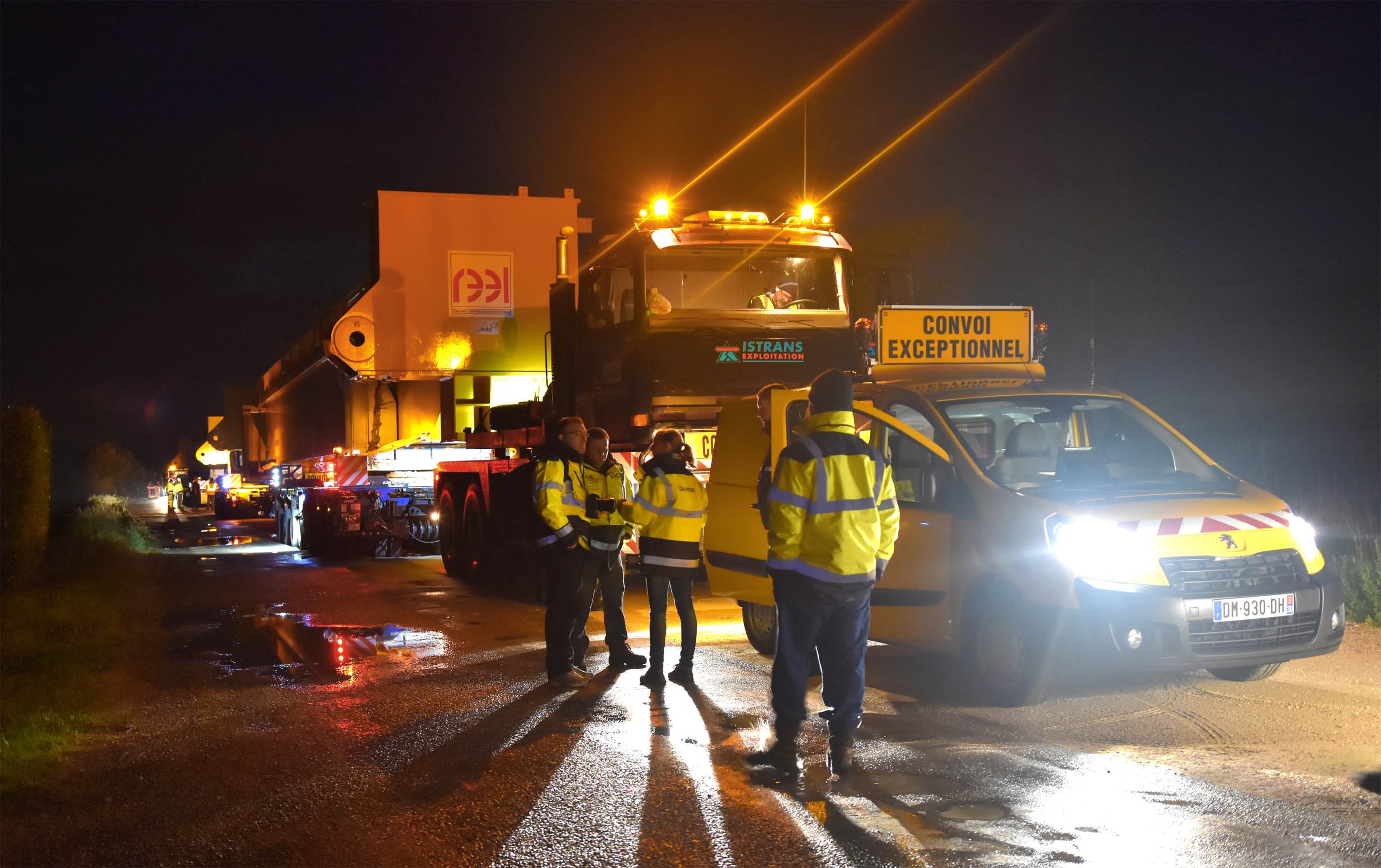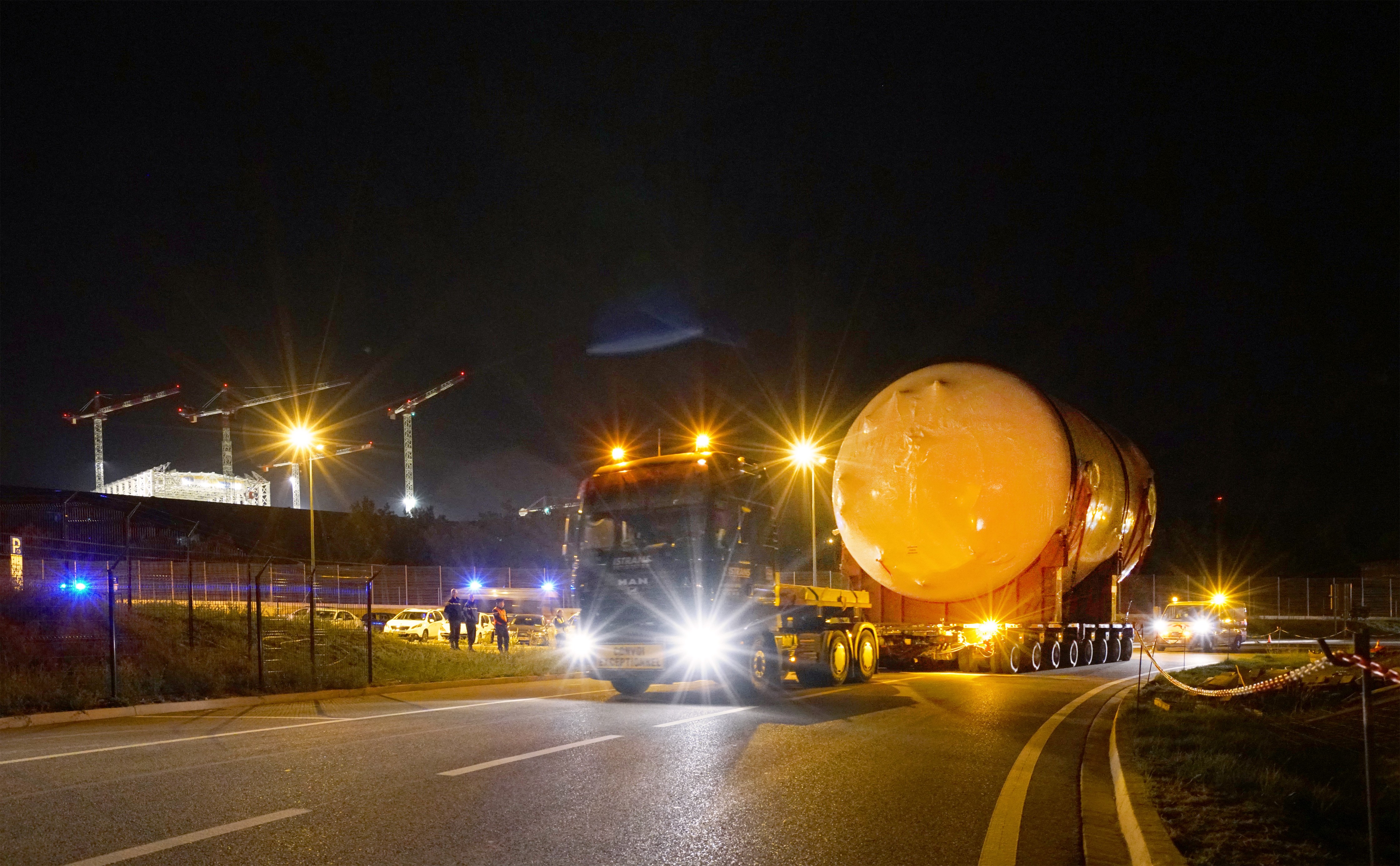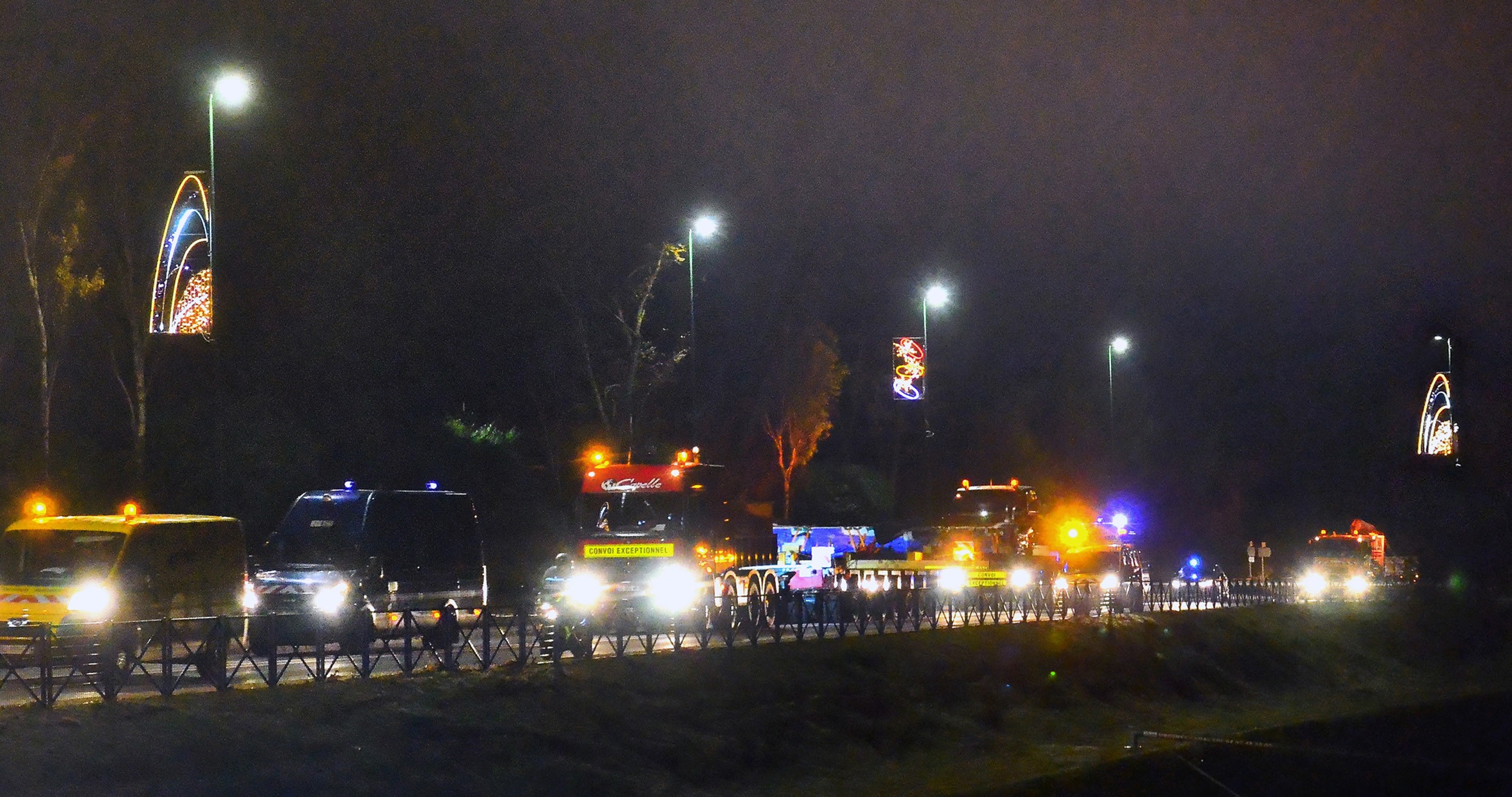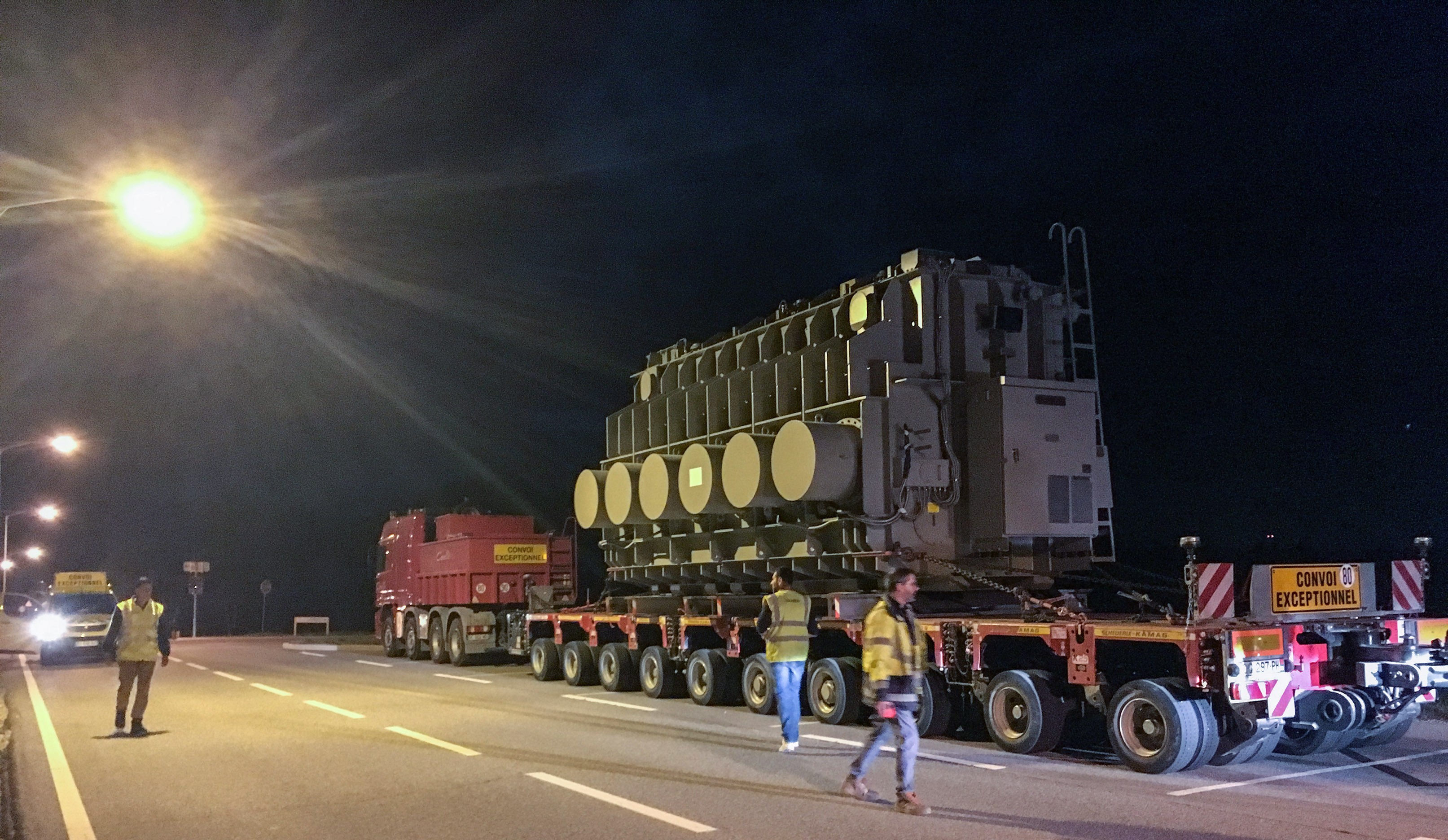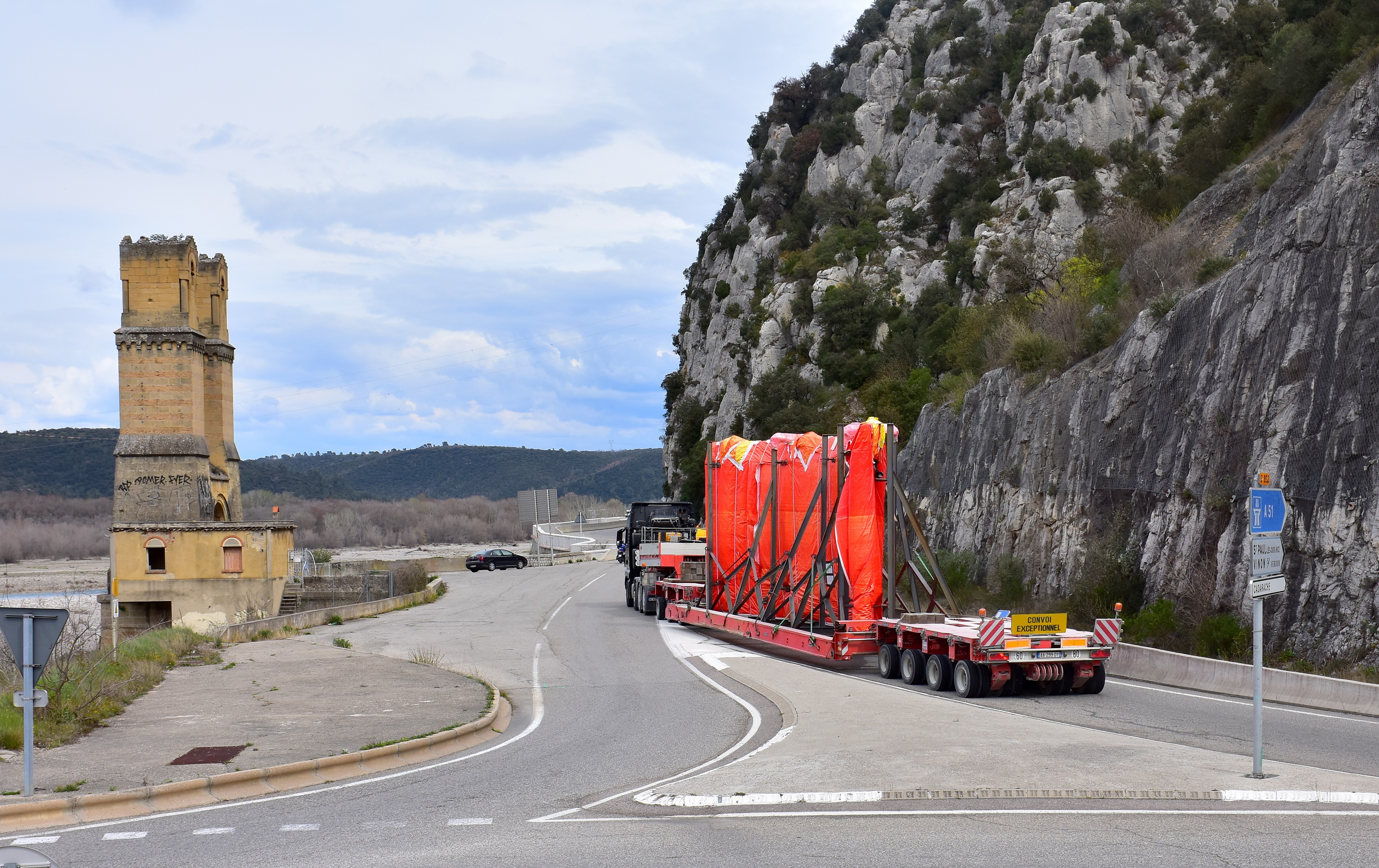50th mammoth convoy in 6 years
On a cold January morning six years ago, the first in a long series of "Highly Exceptional Loads" made its way through the ITER gates. Procured by the US and manufactured in Korea, the 90-tonne high-voltage transformer had travelled by container ship, barge and eventually trailer—a 9,000-kilometre journey by sea and a final 104-kilometre stretch along the "ITER Itinerary." In the years that followed, more than one hundred loads would be delivered to the ITER construction site, many of them larger, longer and much heavier. At dawn on Friday 29 January, yet another convoy—the 50th in six years—entered the ITER premises to deliver the last two segments of the cryostat top lid.
Once again, the massive, high-precision logistics involved in component delivery were on full display, with no fewer than three dozen vehicles and close to one hundred people—a full squadron of specialized gendarmes among them.
Because each component is unique, a convoy along the ITER itinerary is never routine. The speed and the trajectory of the trailer along the entire route are determined by component dimensions and weight, as well as the gravity centre of the load. Once calculated and modeled, the instructions are fed to the driver's tablet, and must be faultlessly observed. Road signage needs to be removed before the passage of the convoy and reinstalled immediately after. Gendarmes on motor scooters are tasked with opening and closing intersections to ensure that both the convoy and the public are safe. As part of the planning for every convoy, thruway employees manage the night-long closure to traffic and reopening the following morning.
Six years of experience have taught the participating parties many lessons. The carefully staged operation has acquired an agility that considerably reduces each convoy's impact on the local population—an important parameter, as approximately 100 others are scheduled before First Plasma.
See some of the highlights of the past six years along the ITER itinerary in the gallery below.

